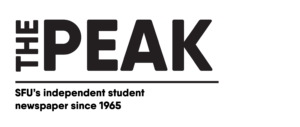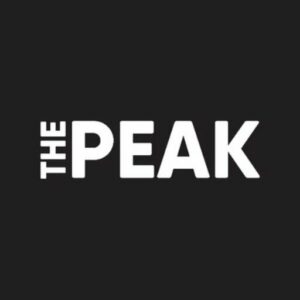Written by: Gurpreet Kambo, News Editor
After a prolonged consultation and hiring period, Dr. Joy Johnson was hired as SFU’s next president. The Peak sat down with Dr. Johnson for an interview, which will be published in three parts. Some of the following answers have been edited for length.
The Peak: Congratulations on the position. What you would like students to know about you, or how you’d like to introduce yourself to SFU students?
Dr. Joy Johnson: I have been at SFU for just over five years, and serving as the Vice-President of Research and International. And I have seen the potential of this amazing university. I think we’re just at such a fortunate place at SFU, in terms of the three campuses, exciting things happening like the New Student Union Building opening, the new Energy Systems Engineering Building out in Surrey, and more potential to come. So that excites me a great deal, and that’s partly why I put my name forward, because I do believe there’s so much potential — so much more that we can do.
I do want students to know that students come first. They’re at the heart of the university. It’s really important that the learning environment be front and centre for the president to be thinking about — the ways in which we provide an excellent education for students.
I’m really aware of the literature that suggests that some of the most important learning that students have takes place outside of the classroom, not necessarily inside the classroom. [For example] The Peak [is] such a great example of this opportunity to engage in real world work, and learn[ing] from that is really important and something that our university values.
P: [We] understand that you previously earned a PhD in nursing and were a professor at UBC. Is there anything else you would want students to know about your background?
J: So I did my first degree in nursing and worked as a nurse for five years before I returned to graduate school. And I loved that work. It’s really a privilege to work with patients and families [ . . . ] and I found it very rewarding. But I found myself also kind of interested in other opportunities as well and went back to school to do my graduate work in nursing, as you mentioned. I really caught the research bug there and really loved the university as an institution [ . . . ] And so [I] did my PhD and then was recruited to UBC. And I had a faculty appointment in nursing at UBC. So I taught at the undergraduate and graduate level.
P: I think a lot of students know the president is the public face of the university, but I don’t think a lot of students really know what the role of the president actually is. Could you give us an outline of this position?
J: The president is the public face of the university and [ . . . ] plays an important leadership role in terms of creating relationships with other entities, be they industry, community, etc. [ . . . ] You can kind of think of it as the CEO role, to lead the leadership team. So the leadership team consists of the vice-presidents and the associate vice-presidents, and to make sure that we are talking to one another, that we are strategically aligned [ . . . ] You can think about the president also though, as the chief academic officer in some ways because the president chairs Senate, and that’s where academic matters come to be considered at the university [ . . . ] And the other important role that the President plays is also sitting on the Board of Governors, right. [ . . . ] the President is unique and in sitting on both of these bodies and making sure that they’re coordinated and and operating in the best possible light. [ . . . ] make no mistake. I mean, universities are complex, big, big organizations.
P: In terms of your previous position as the Vice-President of Research, how does your day-to-day role change? We understand this may involve a lot more direct involvement with students?
J: A lot of my work [as VP Research] has been with faculty and staff, looking at ways that we can encourage and facilitate research across the university and engage with students primarily through very specific initiatives [ . . . ] I had interaction with students, but not as much direct connectivity. I know that one of the things I need to do as president is spend more time listening to students and learning more about student concerns, and [I’m] really looking forward to engaging directly with the SFSS, [which] has not been part of my role.
P: In a broad sense, what would you like to express as your goals for the five-year term as the president?
J: A vision for a university is not an individual president’s vision. It’s a shared vision. And so in my early months, I will be out meeting with students, talking to them, understanding what their concerns are. I’ll be meeting with faculty and staff, community members, alumni as well. [As VP Research], I have not had a sense of the whole university. And that’s something I need to take the time to do [ . . . ] I have made a personal commitment to three areas that I’m passionate about.
The first is students, and making sure that we really are focused on students first, and our learning environments — making sure that we are providing the best quality experiences for our students. And there’s been a lot of great initiatives on learning and teaching here at SFU. But, I think there’s more that can be done. I think we can be more creative, I think we can think longer and harder about ways in which we can provide these real world experiences, the ways in which we can align students’ concerns and societal issues.
[ . . . ] Another is equity, diversity and inclusion [ . . . ] I’m passionate about making sure that the university is a university of inclusion, that everybody feels welcome and feels that they can show up as their best and authentic selves. And I make no illusions about the fact that we’re not there yet, that, you know, we are a reflection of society. Let’s be clear: society has elements that are sexist, racist, homophobic, etc. I think that we need to have to have a conversation and to be thinking about the ways in which we can enunciate our values as a university and make sure that barriers that are there for our students, faculty, and staff to be who they need to be at the university, so they can do the best work they possibly can, need to be addressed. And so that’s part about what equity, diversity inclusion is about, and my vision really is about an inclusive campus. So that’s a priority for me to continue that work, to think about how to continue forward.
And then the third personal priority for me relates to reconciliation. We received a report from the Aboriginal Reconciliation Committee, I think that was about three years ago, and we haven’t delivered on all the commitments that we’ve made in that report. So there’s more work to be done. I think that the president needs to provide leadership in that area, needs to demonstrate commitment to that work as we decolonize, Indigenize, [and] think about ways that we again can provide better access to our Aboriginal students, to the university, and support them. So that’s another kind of personal commitment.
These are things that the university is already committed to, but I really want to enunciate that these are things that are top of mind for me, and things that I want to be able to say everyday ‘I am thinking about how to move the dial on these things’ and thinking about how to, how to resource them appropriately.
































[…] is Part 2 of a three part interview that Dr. Joy Johnson did with The Peak. Find Part 1 on http://www.the-peak.ca This interview has been lightly edited for […]
[…] Johnson elaborated on her previous statement to how SFU is a “reflection of […]
[…] as a core part of its identity as an organization. New SFU President Joy Johnson has also said that it is an important part of her vision for SFU moving forward. Former SFU President Andrew […]
[…] pipeline expansion through Burnaby mountain right now? Especially when reconciliation is one of her top three priorities entering the role. She also seems sincere in her words to act on the suggestions in the final […]